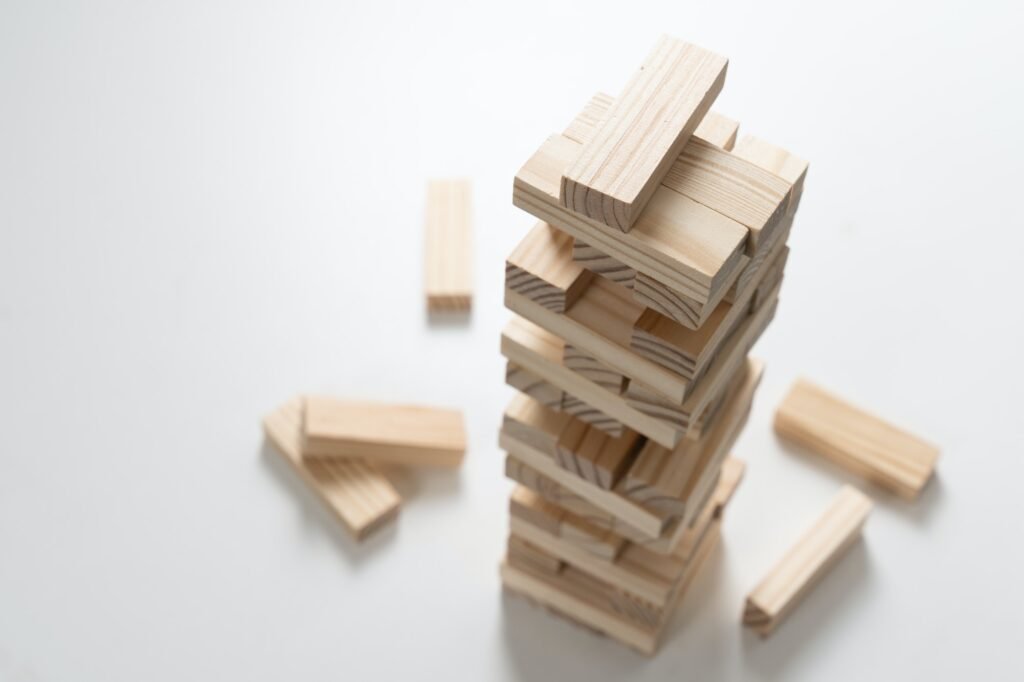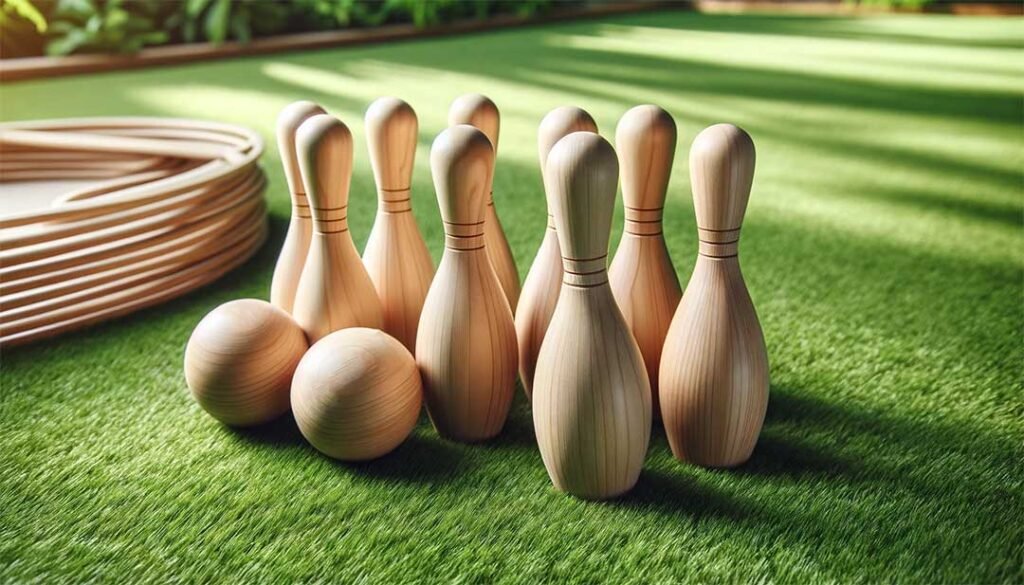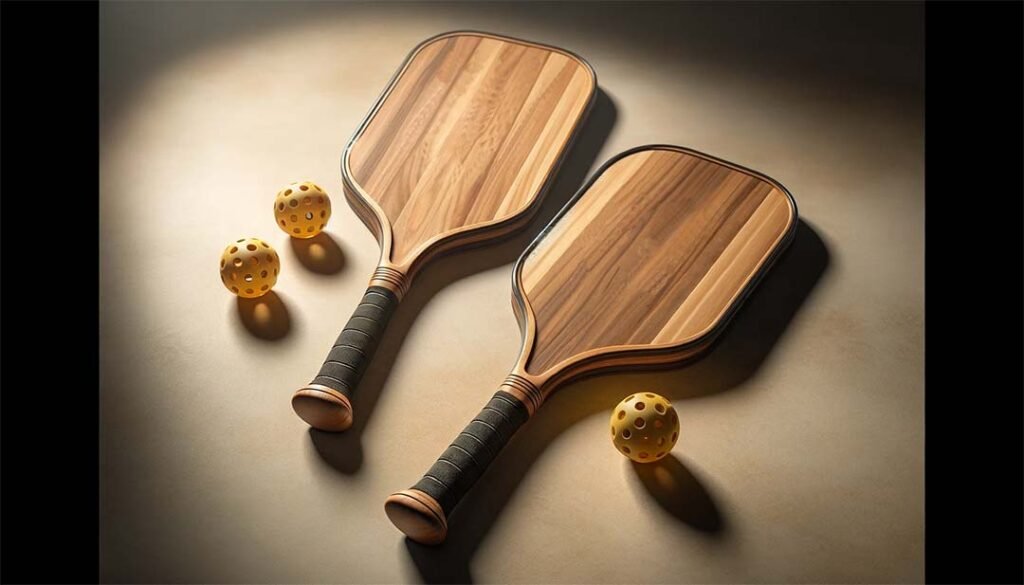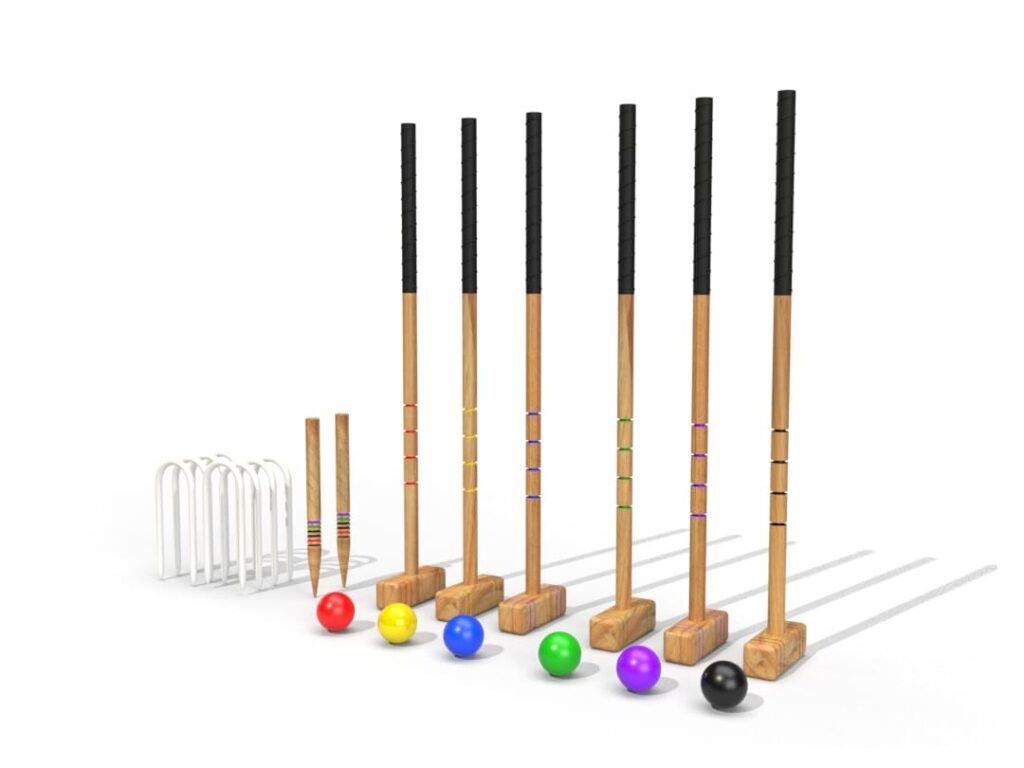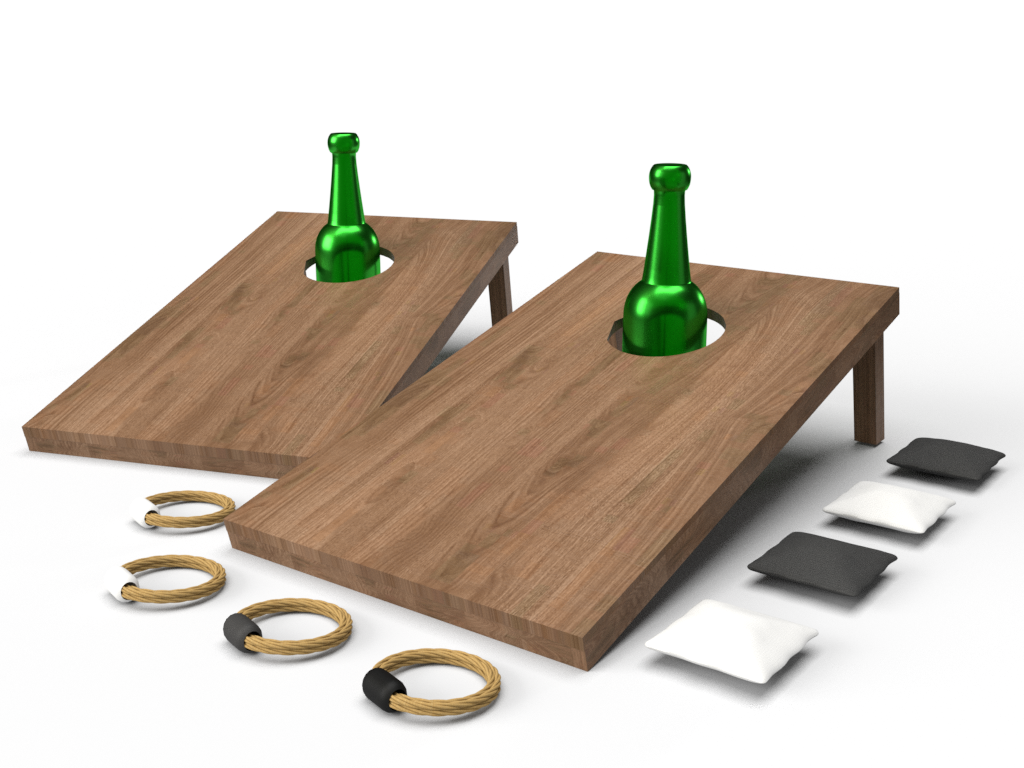What Are the Different Types of Wood Used for Croquet Sets?
The choice of wood in croquet sets significantly affects their durability, performance, and aesthetics. Here’s a quick rundown of the main types of wood discussed:
- Hardwoods like ash and oak are prized for their durability and shock resistance, making them suitable for competitive play. Ash offers flexibility and good shock absorption, ideal for mallet handles, while oak is known for its toughness, perfect for withstanding intense play.
- Softwoods such as pine and cedar are lighter and more cost-effective for casual or family play. Pine is lighter for less play, while cedar is naturally rot-resistant, making it a lighter option for durable sets.
- Additional wood types include maple and hickory, known for their strength and durability; bamboo, a sustainable and eco-friendly option with unique flexibility; teak, a luxurious wood with natural resistance to moisture and decay; and mahogany, noted for its elegance and sophistication, making it ideal for luxury sets.
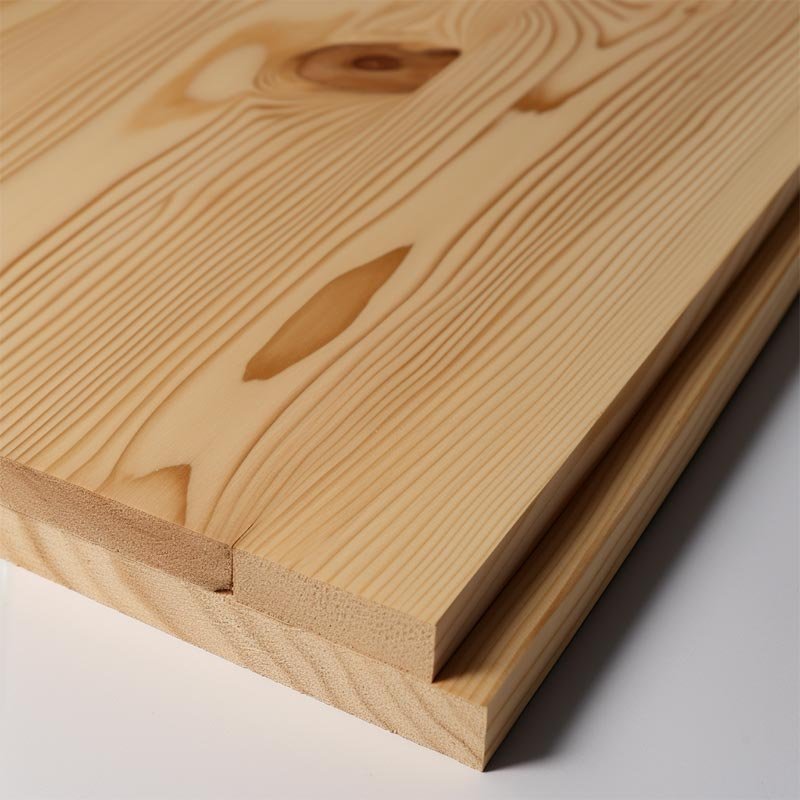
What are the differences between hardwood and composite materials for wooden croquet?
Hardwood Mallets:
- Durability: Hardwoods like ash, oak, and maple are renowned for their strength and longevity. They can withstand the impact of regular play, making them a durable option for croquet mallets.
- Feel and Performance: Hardwood mallets have a traditional feel and natural dexterity that some players prefer to absorb impact and control during play. The weight of a hardwood mallet also contributes to a more stable swing.
- Aesthetic and Maintenance: These mallets boast a classic, elegant appearance but require regular maintenance, such as oiling, to prevent wear from the elements.
Composite Materials Mallets:
- Durability: Composite materials, including carbon fiber and fiberglass, are highly durable and resistant to weather conditions. They are less likely to warp or degrade over time compared to wood.
- Feel and Performance: Mallets made from composite materials are usually lighter and can provide more speed and power in a swing. They offer a different feel, which might include increased stiffness, potentially affecting control and precision.
- Aesthetic and Maintenance: Composite mallets have a modern look and require minimal maintenance. They are designed to withstand the elements without the need for periodic treatment.
Key Differences:
- Weight: Hardwood mallets are generally heavier, providing stability and momentum. Composite mallets are lighter, which can enhance swing speed.
- Maintenance: Hardwood requires more care to maintain its condition, while composite materials are low-maintenance.
- Feel: The choice between hardwood and composite often comes down to personal preference for the feel of the mallet. Hardwood offers a traditional, natural feel, whereas composites offer a modern, potentially more responsive touch.
- Cost: Composite mallets can be more expensive initially but may offer cost savings over time due to their durability and low maintenance needs.
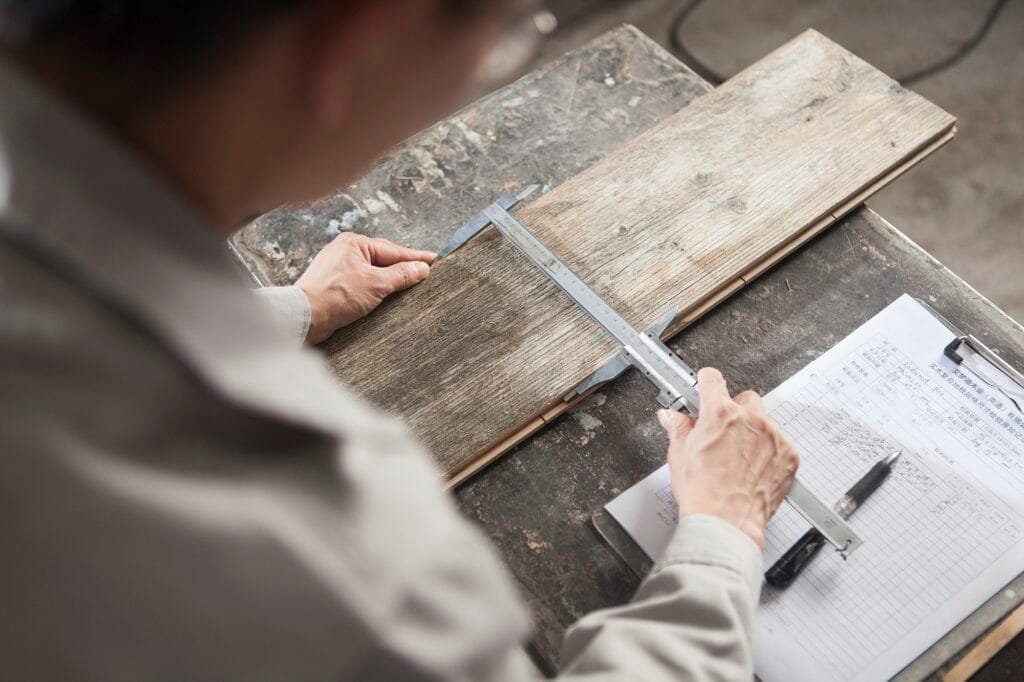
Croquet Set Standard Size
Mallet Magic:
Picture this – a croquet mallet, your trusty companion in the game, usually stands tall at about 36 inches (that’s around 91 cm for the metrically inclined). It’s not just a stick and a block; it’s the extension of your will on the lawn, designed to fit comfortably in the hands of adults seeking to strike with precision and grace.
Balls of Glory:
These aren’t just any balls; they are the spheres of destiny. Each ball in a standard set measures about 3 5/8 inches in diameter (we’re talking about 9.2 cm). They’re sized to challenge and delight, rolling across the lawn like bold adventurers on their quest through wickets.
Wickets that Welcome:
Speaking of wickets, these little gateways are not just obstacles but opportunities. Designed to be just a tad wider than the balls, they beckon with the promise of skillful navigation. They’re your checkpoints in the verdant maze, your milestones of success.

Are custom mallets better than standard ones?
Benefits of Custom Mallets:
- Tailored Fit: Custom mallets are made to fit your specific height, strength, and playing style, potentially improving your game.
- Preferred Weight and Balance: You can specify the weight and balance that feel most comfortable to you, which can enhance your control and precision.
- Unique Materials and Designs: Customization options often include a choice of materials and designs, allowing for a more personal and possibly more aesthetically pleasing mallet.
Advantages of Standard Mallets:
- Cost-Effective: Standard mallets are typically less expensive than custom ones. They offer good quality and performance at a more accessible price point.
- Immediately Available: Off-the-shelf mallets can be purchased and used right away, with no waiting period for customization.
- Proven Performance: Standard mallets have been tested by a wide range of players, and their performance is well-documented and reliable.
So, Are Custom Mallets Better?
If you’re someone who plays croquet at a competitive level, has specific needs that standard mallets don’t meet, or simply wants a mallet that feels uniquely yours, then yes, a custom mallet could be considered “better” for you. It’s like having a suit tailored to your measurements compared to buying one off the rack; the tailored suit is likely to fit you more perfectly.


